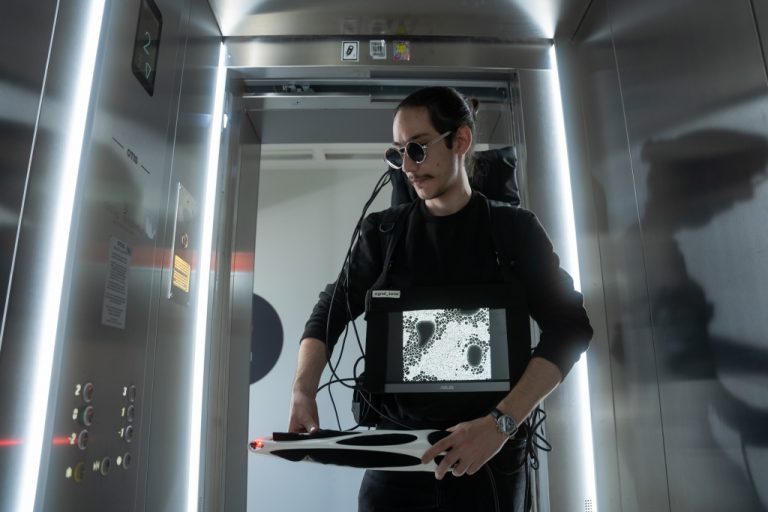

Hearing the invisible, observing the mute – Szabolcs Fülöp’s signal_zone project
Most of the systems that govern our day to day life are so ingrained into our daily activities that they go unnoticed. Szabolcs Fülöp claims humanity and technology live in a symbiosis. However there are some technologies, which rather act as a superimposed entity on society, and their infrastructure provides space for a new kind of superstition. Since many people do not understand how wireless and digital innovations work around us, the Internet is in some ways a supernatural force for many people. In the Anthropocene, the Internet and our appliances have taken the place of the feared unknown. As a result of this status quo technological ease and progress have given way to neo-animistic magical thinking. By highlighting the connection between the individual user and the invisible, Szabolcs makes us think about this relationship in a profound way.

The signal_zone project aims to visualize the electrical network structure of the environment through a portable audiovisual installation. The outfit worn by Szabolcs in the project is the archetypical look of a professional maintenance worker, and it is an integral part of the project. His equipment consists of a sound detector which provides the sound input through an audio card. On Szabolcs’ back a battery pack acts as power source. He looks like an explorer in an alien land. The somewhat oversized shape of the sensor is reminiscent of the metal detectors used by TSA agents at security gates. Together with the repurposed wearable monitor it gives a ghostbuster-like overall impression.

In the spaces we inhabit in our everyday lives the outfit gives a foreign and comic appearance. All of a sudden these liminal spaces we pass through every day seem alien and absurd. The portable display provides a visual representation of electrosmog using a generative system. The graphics of the output images are striking in their starkness: the natural, lifelike patterns on a pixelated, graphic rendering are generative design in its purest form.



Electrosmog is a type of pollution that is not discussed enough: it is the man-made electromagnetic radiation emitted by appliances and devices in our surrounding environment. Fellow human beings who are convinced that their life-threatening allergic reactions with uncertain origins are to be blamed on electromagnetic radiation could be a case of the so-called nocebo effect. The nocebo effect is the flipside of the placebo effect: expecting something to cause you harm based on a previous belief that the thing is harmful.

In prehistoric times humans did not understand what makes them ill, but shared knowledge and innovations, best practices have taken the place of superstition. However it is argued that evolutionarily, the need to see patterns in our maladies and attribute to them unrelated things still persist. Since environmental sensitivity is still a hotly contested concept among scientists, it remains ambiguous whether it has psychological or biological origins. In this sense people who suffer from the effects of electrosmog are the canaries in the coalmine: their malady is a physiological manifestation of the soullessness of postmodern late-capitalist lifestyles. By tackling the topic of electrosmog Szabolcs either intentionally or unintentionally gives us insight into an intrinsic human experience in the postmodern age.
// /
Szabolcs Fülöp graduated in 2022 from the Moholy-Nagy University of Art and Design Budapest, with an MA in graphic design. His graduation project supervisor was Antal Lakner, his thesis advisor was Ákos Schneider.
Signal_zone is currently on display at the Ludwig Museum’s exhibition “I am not a Robot” – On the Borders of the Singularity.


